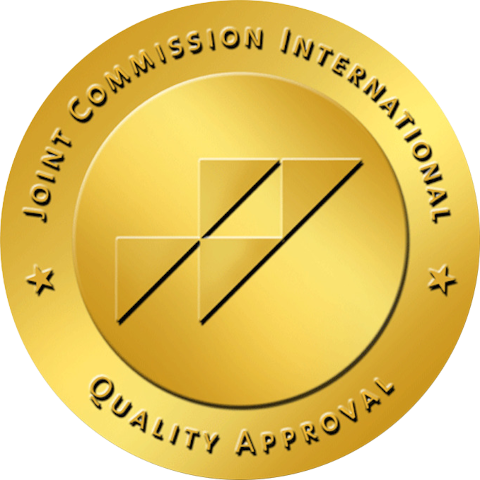
Every three years La Hacienda Treatment Center is reviewed for accreditation by The Joint Commission. It’s not an organization that most folks outside of the health care industry know well, so let’s look at it and why it is important.
Founded in 1951, The Joint Commission (TJC) is an independent, non-profit organization which sets performance standards for evaluating health care organizations with the goal of improving health care quality.
A TJC survey team inspects a participating facility and interviews its staff. Upon verification that it is meeting the standards for quality and safety, the organization earns The Gold Seal of Approval (registered trademark).
Such accreditation helps the public in their search for value and excellence in care and patient safety, whether from a hospital or behavioral health care provider.
Program Areas Covered
There are nine areas of health care under TJC’s accreditation program:
- Assisted Living Communities
- Hospitals
- Critical Access Hospitals
- Home Care
- Nursing Care Centers
- Behavioral Health Care and Human Services (includes La Hacienda)
- Ambulatory Care
- Pharmacy
- Laboratory Services (surveyed every two years)
Why Accreditation Matters
The Joint Commission accreditation is evidence that a health care organization has a commitment to provide the highest quality patient care. This is important to both potential patients and other stakeholders, especially insurance providers. In some areas, accreditation is becoming a prerequisite to eligibility for insurance reimbursement.
Joint Commission accreditation is necessary for some health care organizations to be able to participate in Medicare and Medicaid programs.
Regulatory compliance is another reason for TJC reviews. The Texas Health and Human Services Commission, which licenses La Hacienda Treatment Center, may accept TJC accreditation in lieu of conducting its own on-site survey.
Helps Empower Health Care Leaders
Preparing for and responding to TJC reviews helps empower health care leaders to improve risk management and risk reduction.
Enhancing risk management may attract potential insurance providers and reduce the cost of liability insurance, and in turn help the health care organization minimize the costs to patients.
A TJC affiliate, Joint Commission Resources (registered trademark), provides continuing support, education programs, and advisory services to accredited health care organizations. These available resources help providers continuously improve health care.
Efforts to Improve Patient Safety
Excellence in patient safety is a primary concern of The Joint Commission. Its constant efforts help to ensure that an agency which it reviews provides patient care that results in no harm .
Joint Commission resources on patient safety include its award-winning Speak Up program which has been used in more than 40 countries.
The National Patient Safety Goals were established in 2002 to help accredited organizations address specific areas of concern in regard to patient safety.
One of the key goals focuses on efforts to enhance communication between health care providers and patients as part of its plan to improve patient safety.
Evaluating Health Care Organizations
The Joint Commission requires that behavioral health care organizations such as La Hacienda Treatment Center measure and analyze patient outcomes. This analysis helps improve quality of care, treatment and services provided.
A added value of these results is assuring potential patients that there is a high reliability that the organization’s efforts will help the patient achieve their recovery.
TJC maintains an online list of tools and websites to help providers evaluate their efforts. In addition, the commission solicits new applications from developers. It also provides information on training events and other resources including free webinars.
Preparation for TJC Surveys
While the exact timing of the survey is not announced in advance, The Joint Commission provides tools and information for providers on how to prepare for the visits.
This includes a Behavioral Health Care Guide to Accreditation and a readiness checklist. Healthcare providers also have access to both print and electronic versions of the Comprehensive Accreditation Manuals, which outline expectations and standards for 15 areas of patient care.
The commission recommends that organizations perform pre-survey reviews to see where they are not meeting standards or not providing safe environments, conduct a mock survey with staff, and develop timetables for compliance with standards in areas that are deficient.
A Typical Survey
During an on-site survey, TJC personnel assess compliance with commission standards. The survey includes:
- A survey-planning session.
- An opening conference and orientation to the organization between surveyors and the organization’s team.
- A dedicated leadership session.
- A competence assessment process.
- An Environment of Care® session, including building tours to determine care quality and patient safety.
- An exit conference during which the survey team presents expert advice in a written summary of its findings.
Survey Teams are Trained Professionals
TJC behavioral health care field survey teams are composed of professionals from within the industry who are employed by the commission. They include psychologists, social workers, behavioral health care nurses and administrators.
Survey team members are familiar with the issues facing the surveyed organizations and have the experience to suggest effective solutions for safety and quality problems.
Surveyors receive both initial training in review procedures and annual continued training. Each conducts an average of 16 site visits annually.
Advocacy For Health Care Legislation

The Joint Commission’s office in Washington, D.C., lobbies the federal government on important issues pertaining to patient safety, regulatory compliance for healthcare organizations, and health care quality.
The Washington staff works with many levels of national government–the legislative and executive branches, federal oversight bodies, and national stakeholder groups and coalitions.
An important part of The Joint Commission’s advisory services is connecting organizations with a federal body which helps them with health care quality and safety, accreditation and certification concerns at the national level.
Joint Commission International
Joint Commission International, a global version of the commission sets standards for treatment quality and patient safety worldwide.
It has surveyed and given certification to more than 1,000 health care organizations around the world.
Joint Commission International is accredited by the International Society for Quality in Health Care External Evaluation Association.
A History of Setting Medical Standards

Development of The Joint Commission involved several steps in the early 20th Century as healthcare leaders began setting standards for safe and effective care.
In 1917 the American College of Surgeons developed the Minimum Standard for Hospitals and began on-site quality and safety inspections. The first standards manual used in doing a hospital survey consisted of 18 pages and was printed in 1926.
The Joint Commission on Accreditation of Hospitals (JCAH) was created with a main purpose of providing voluntary accreditation for an organization’s quality of care.
In the late 1980s the name was changed to the Joint Commission on Accreditation of Healthcare Organizations to reflect its expanded scope of activities.
The Joint Commission Stands for Racial Justice and Equity
The Joint Commission does not abide racial discrimination, either on its staff or in the health care organizations to which it provides accreditation and certification.
Joint Commission resources show that institutional, systemic racism adversely affects health. Racism and associated stressors start adversely affecting physical and mental health early in life, leading to poor mental health and higher rates of chronic disease.
Just as doctors and clinicians take an oath to do zero harm, the commission says it is time for a commitment to end prejudice and stand with all people of color.
Who Manages the Joint Commission?
A board of 21 voting members—health care leaders including physicians, administrators, nurses, employers, and quality and innovation experts—governs The Joint Commission’s activities.
Members around the board’s conference table include representatives from each of TJC’s corporate members: the American Hospital Association, the American Medical Association, the American College of Physicians, the American College of Surgeons, and the American Dental Association.
There are also seven public/at-large members and The Joint Commission President/Chief Executive Officers is an ex-official member.




